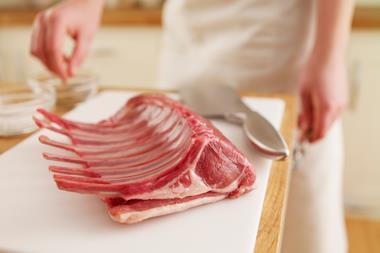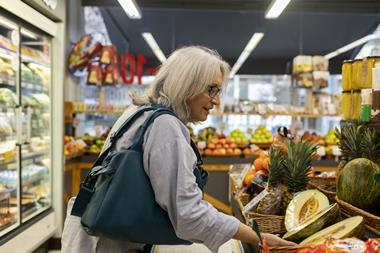With Getir, GoPuff and Gorillas among those losing sales and shedding staff, is this the end for rapid grocery? Or can they find another way to survive?
We are not a struggling company,” insists Adrian Frenzel, Gorillas’ chief operating officer. “I know it’s perceived on the outside a bit differently. But we are not a struggling company.”
Many are unconvinced. Since the rapid grocer pulled out of several European markets in May, just months after securing close to $1bn in new funding, questions have been asked about not only Gorillas’ future, but that of the entire rapid grocery sector.
For Gorillas is not the only business seemingly retreating from a sector not long ago lauded as the future of grocery. Since March, Gopuff has said it is cutting 400 jobs or 3% of its global workforce, Getir is reducing its global headcount by 14% just weeks after raising $768m at a valuation of $11.8bn, while Zapp is in talks to lay off 10% of its staff and is pulling out of Amsterdam less than a year since it launched.
Having raised billions of dollars since their inception a couple of years ago, expanded into new regions, and opened thousands of dark stores, the party appears to be coming to an end. Data from Apptopia shows app downloads and usage have both tumbled in recent months with Getir, the UK’s biggest rapid grocer, seeing monthly user sessions halving from almost 30 million in March to just over 15 million in June – a disaster when considering order values and total orders must rise in order for the company to become profitable. The speed of the decline raises the question: what’s changed?
“For me, it’s not what has changed. But rather, has anything changed?” says Quaid Combstock, Jiffy’s former head of delivery operations and now a q-commerce consultant. “Whether intentional or not, the reality is that q-commerce, as we know it, was never designed to be profitable. One only has to do a quick calculation on the rider labour costs to show that q-commerce companies are paying more in delivery labour than they charge the customer. So unless the basket cost is very high, each order generates a loss.”
Research by Bain & Company consultants show that at current daily volumes of 300 to 600 orders per dark store, rapid grocers could be spending more than twice as much as they earn on every order. “Considering this, one has to ask why investors are willing to give capital to such a lossmaking proposition,” Combstock adds.
“I have yet to meet anyone who truly cares about receiving their goods in 10 to 20 minutes”
Through the heady days of 2021, investors were certainly willing and able to spend, with venture capitalists throwing $5bn into the sector that year, according to Pitchbook data. At the time, investors were willing to fund companies to capture market share but increasingly feel they’re “funding an unnecessary battle that nobody appears to be winning,” says Combstock. Now though, they’re looking to “cut their losses with no more funding unless there is a clear path to profitability”.
To date, rapid grocers have measured their progress against indicators such as growth in customer base, orders, and average order value, says Marc-André Kamel, partner at Bain & Company. But “growth alone will not be enough to chart a path to profitability”.
As a result, many in rapid grocery are turning to alternative income streams to try and squeeze every last drop of additional revenue from their business. Gorillas, for example, which was reportedly burning through €80m a month at the end of last year, has switched “from hyper growth to a clear path to profitability” and is now developing new revenue streams to try and do it.
In June, it launched four own-label brands featuring around 50 products across 11 categories, a move quick on the heels of rival Gopuff, which launched own-label items including water, household and snacks in January. It was a notable strategy shift, but whether it’s enough to drive any significant impact is in doubt. “Given the relatively low sales volumes these apps are doing, own label is not a magic bullet,” says Viv Craske, an online grocery consultant.
There are other options, he says. “The question is whether or not they will take these options or blindly soldier on in the hopes of profitability with the current model before the money runs out.”
One option is to offer their rapid delivery capabilities as a service. Jiffy first launched this in January, enabling brands and retailers to give customers delivery of their products bought online in under 15 minutes, using Jiffy’s ordering system and fulfilment network.
The trial was clearly a success. Months later, Jiffy announced it was making a “major strategic pivot” to cease rapid grocery of its own to become a dedicated service provider. Deliveroo has now done the same, launching a service last month that provides its “operating expertise, inventory management and picking technology” to retailers.
“Q-commerce was never designed to be profitable”
Celia Van Wickel, Kantar’s digital commerce director, is unconvinced by this pivot too. “The tech to date by rapid delivery players has not been that sophisticated to purchase as a service,” she says. “That is why only a few may have the desirable AI models and tech infrastructure to sell services.”
Commentators on the sector are broadly in agreement: that while ideas such as own-label ranges and speed-as-a service may catch the eye of the media, the reality is that they’re only tinkering around the edges. More fundamental change is needed.
“Improvements need to be found across the board,” says Kamel from Bain & Company. “Higher average order values and higher-margin baskets (without slowing down picking); better supplier terms; faster picking and delivery; dynamic pricing based on the time of day and customer price elasticity; less shrink; and fewer delivery delays and missing items.” He recognises, however, that achieving all this “could be a tall order”.
One quick-fire solution saw Gorillas partner with Tesco last year to take up unused space in three supermarkets to use as dark stores, and add Tesco products to its available range on the app. It’s now struck similar deals with big retailers across Europe in a move that has triggered a “massive uptick” in average order value, according to Gorillas’ Frenzel, “and it’s super interesting from a margin perspective as we get better price terms”.
Kantar’s Van Wickel believes such retail partnerships could buy time for rapid delivery companies and lead to bigger retailers investing if they cannot build a rapid delivery model themselves. Indeed, French rapid grocer Cajoo first partnered with Carrefour before the retail giant later became an investor.
Such arrangements “make a lot of sense” says Combstock, “as it reduces overheads – no rent, reduced labour costs, and enables easy expansion – and, thus, the risk”. But many retailers will remain wary about “outsourcing the customer experience to a third party”.
Another option is for rapid grocers to address what Combstock calls “a keen pain point” in the sector: the high cost of human labour required for picking, packing and delivering an order. “Considering this, if companies can find a way to automate some functions, they can reduce the labour cost,” he says. “Removing the human involvement could reduce the per order costs by up to £10,” he adds. “At scale, this could be highly profitable.”
Many are starting to explore automated dark stores, for example, but while solutions are available they will require significant investment to implement, something most rapid grocers simply don’t have now.
But, driven by necessity, Van Wickel says that some are now exploring more automated dark stores. “Automation will need to be a big part of it,” she says. “Changing from 1:1 high-touch orders, to a system that allows faster picking and batching of orders.”
The final ploy is to buy into what the sector has long set as its anathema: slowness. After all, while 15 minutes is the standard many set for getting groceries to the customer, it is far from clear whether there is a genuine customer demand for such haste. “From a consumer perspective, I have yet to meet anyone who truly cares about receiving their goods in 10 to 20 minutes,” says Combstock, who calls such pacy deliveries “a farce and a marketing stunt”.
For this reason, he believes that those who succeed will start to offer more selection around the delivery times, bringing in next day, same day, hour slot, and on demand options. “The quicker you have it delivered, the more you pay. It may seem to defeat the point, but players that choose to focus on unit economics over speed will win,” Combstock says.
“Investors’ hopes for a better H2 are likely to remain unfulfilled”
Yet even after making these fundamental fixes, the sector still has an uphill battle to survive. They are now operating in a much tougher environment with JP Morgan warning last month that food delivery firms will need to slash forecasts later this year.
“Investors’s hopes for a better H2 are likely to remain unfulfilled as high inflation and rising borrowing costs are starting to drive deteriorating consumer budgets,” a note from the investment bank said.
There is also the looming threat of Amazon. Amazon’s Fresh stores have already disrupted the mainstream grocery sector, and some now expect it to use its 12% stake in Deliveroo to make further moves into the rapid delivery sector. Combstock believes Deliveroo’s rapid delivery service, Hop, could start using Amazon Fresh stores instead of dark stores, thereby reducing the need for additional infrastructure and staff costs.
“Deliveroo has an active rider base in most UK cities and Amazon Fresh intends to expand to most UK cities… Combine this with Deliveroo’s dark kitchens and it creates quite a potent concept,” he says.
After a whirlwind two years of boom and bust, there is a sense that the headwinds are now too strong for the rapid grocery party to survive much longer. That’s not to say, however, that it couldn’t be picked up again elsewhere. Van Wickel compares it to the dotcom bubble. “When the bubble burst it did not stop e-commerce,” she says. “It simply reformed it.”




















No comments yet